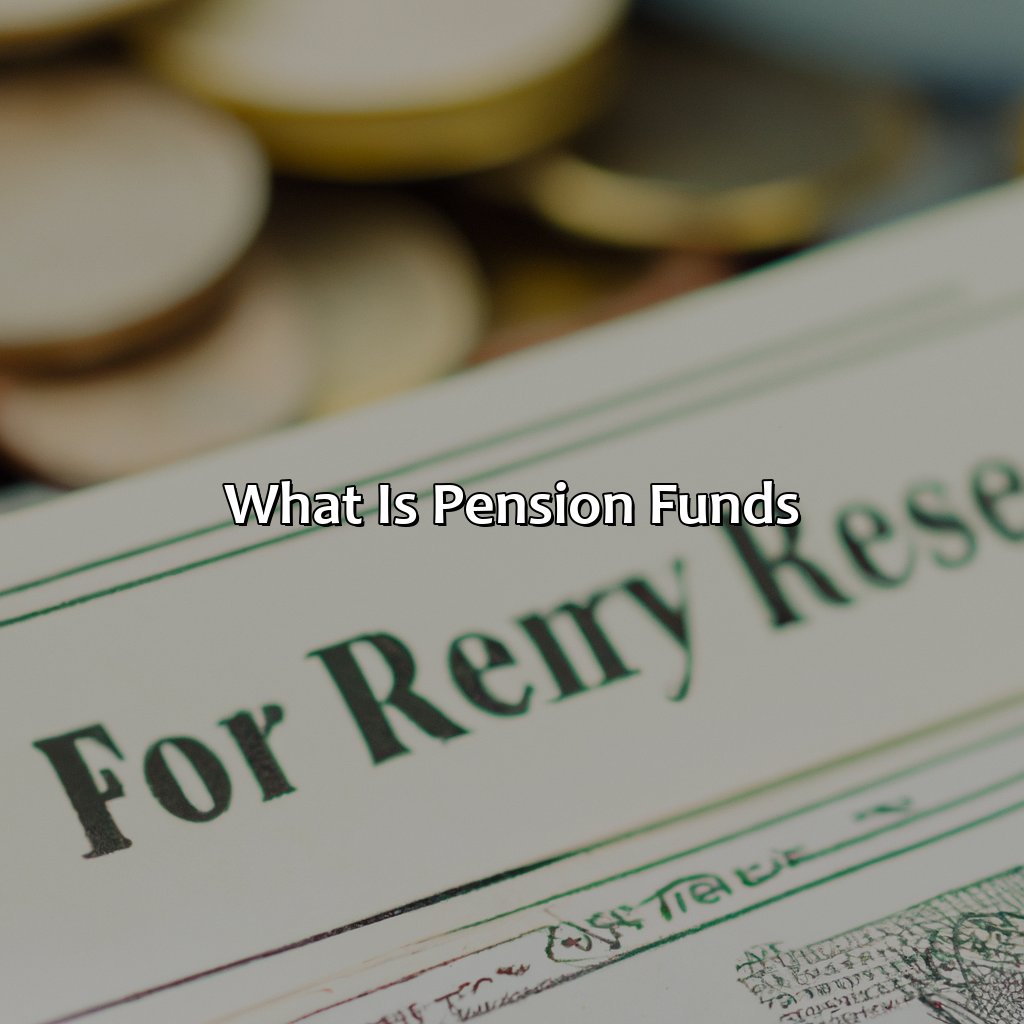What Is Pension Funds?
Key Takeaway:
- Pension funds are retirement savings plans that employers establish for their employees to contribute to while employed, and withdraw from in retirement.
- There are two main types of pension funds: defined benefit plans and defined contribution plans. Defined benefit plans guarantee a specific benefit amount upon retirement, while defined contribution plans specify the contributions made and rely on investment returns to determine the final account balance.
- Pension funds offer advantages such as stable and predictable retirement income, tax-deferred growth, and professional management of investments. However, they also have disadvantages such as potential underfunding, restrictive withdrawal rules, and lack of portability.
Struggling to understand pension funds? You’re not alone. This article explains the basics of pension funds and why they are an important consideration for financial security. Whether you’re looking to save for retirement or want to know more about the pension system, this article has it all!
Definition and Overview
To comprehend pension funds, you must grasp their definition and overall view. This section covers all you need to know: from explanations of pension funds to the various types of pension funds.
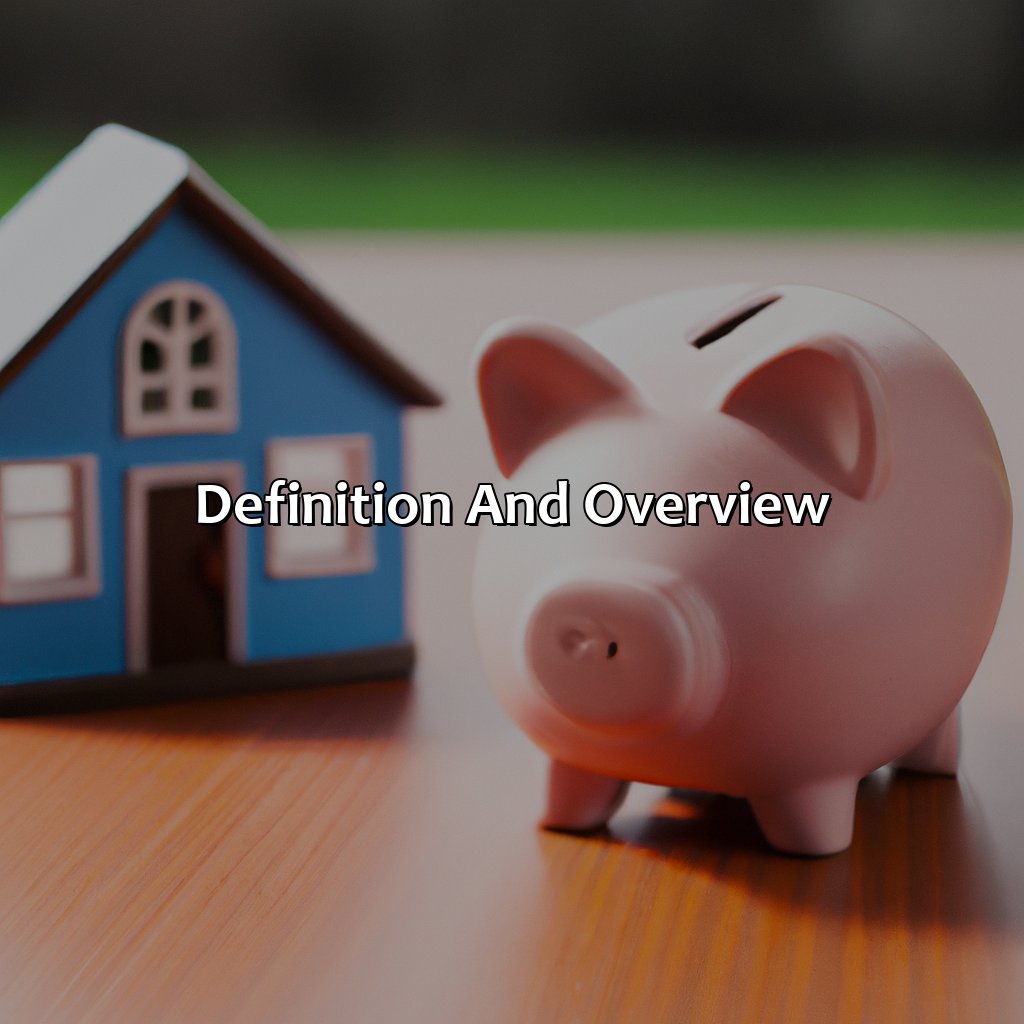
Image credits: retiregenz.com by Adam Arnold
Explanation of Pension Funds
Pension funds are investment pools set up by employers to provide their employees with retirement benefits. These funds collect contributions from the employees and the employer, which are then invested in various assets such as stocks, bonds, and real estate. The money is then managed by professional fund managers who aim to maximize returns on behalf of the members.
Investors in pension funds benefit from diversification across a range of investments, lowering the risk profile of their portfolios. Pension funds also tend to have lower fees and expenses than retail investment products due to economies of scale.
It’s worth noting that pension funds can be either defined benefit or defined contribution plans. Defined benefit plans promise a specific payout upon retirement, while defined contribution plans involve employees contributing a portion of their salary to an account that is subject to market fluctuations.
To learn more about ER pension, visit our website.
Overall, pension funds play an essential role in helping individuals save for retirement and providing financial security during old age. However, like any investment product, individuals should carefully consider their investment goals and risk tolerance before investing in pension funds.
Pension funds come in all shapes and sizes, kind of like your collection of exes.
Types of Pension Funds
Pension Funds Variation:
A widely accepted practice for retirement planning is pension funds. These funds are a collection of investments intended to provide long-term financial security in retirement. There are different types of pension funds, each with its own features and benefits.
| Type | Definition |
|---|---|
| Defined Benefit | A plan that guarantees a retirement benefit based on time worked |
| Defined Contribution | A plan where both the employee and employer contribute to an account |
| Cash Balance | A defined benefit plan with some aspects of a defined contribution plan |
| Public Pension Plan | For government workers, usually they don’t contribute but have lower benefits |
Although there are various types of pension funds, the most common are the defined benefit and defined contribution plans. Both private and public sectors can access these plans. Presently, higher contributions to defined contribution plans are seen as more favorable than the others due to their flexibility.
Authentic Fact:
According to a report by Willis Towers Watson (a multinational risk management company), over 80% of retirees solely depend on social security for financial support.
Get ready to put your trust and money in the hands of complete strangers, because that’s how pension funds work.
How Pension Funds Work
Gain insight into how pension funds function! Exploring the contributions from staff and employers, the handling of the funds, and the investments made by them. These subsections will help you understand how pension funds keep retirement benefits safe for employees.
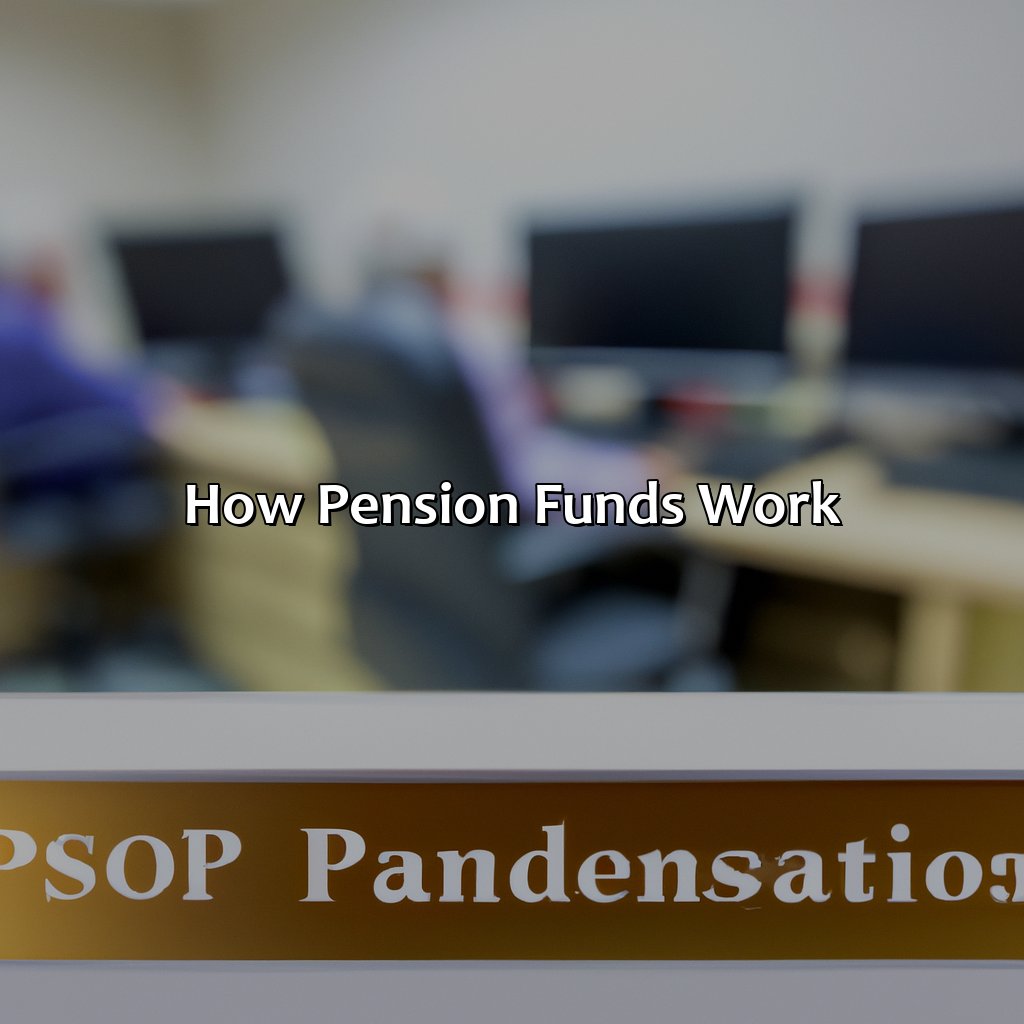
Image credits: retiregenz.com by Joel Woodhock
Contributions by Employees and Employers
Employer and employee make contributions to Pension funds on an agreed percentage of the employee’s salary.
- Employees typically contribute a certain percentage of their salaries to pension funds through payroll deduction.
- Employers may match contributions by employees, which can provide financial benefits for employees and help them save more for retirement.
- Contribution rates are determined by the plan, with maximum limits set by the government.
Pension funds have different contribution models, including defined-benefit plans or defined-contribution models. Funds may invest in stocks, bonds or other securities to generate a return that helps cover the cost of providing the promised benefits.
According to Investopedia, in 2019, US pensions assets grew to $29 trillion across various sectors including public and private pensions.
Managing a pension fund is like walking a tightrope—one wrong move and it can all come crashing down, but if you can keep your balance, retirement bliss awaits.
Management of Pension Funds
Pension funds are managed by investment professionals who invest contributions made by employees and employers to ensure future payouts. The goal is to grow investments while minimizing risk. Investment decisions are carefully evaluated based on various factors, including asset allocation, risk tolerance, and expected returns. The fund managers closely monitor the markets and adjust investments accordingly.
To increase returns, pension funds can invest in a diverse range of assets such as stocks, bonds, real estate, and private equity. They also use different strategies like active management or passive management. Active management requires careful stock picking while how a pension fund works can be understood by passive management which aims to replicate market indexes.
Pension fund managers must adhere to strict legal standards governing their investments’ safety and transparency. They also have fiduciary responsibilities to protect employees’ retirement benefits. Unlike other investment managers, pension funds aim for long-term growth instead of maximizing short-term profits.
To learn more about what is ee pension, it’s important to understand the roles and responsibilities of pension fund managers.
An analysis by the Pension Rights Center shows that many Americans lack retirement security because they lack employee-sponsored plans like pension funds that provide stable financial support in old age.
Looks like pension funds have a better investment portfolio than I do, I should probably hire them as my financial advisor.
Investments of Pension Funds
Pension funds invest reserves to provide retirement income for members. Diverse portfolios include bonds, company shares, and properties. Returns are reinvested to generate more significant profits, secured by solid regulations.
The primary purpose of the investments is to guarantee that adequate funds are available when individuals retire. Therefore, prudent investments that align with the risk-reward profile of the fund’s beneficiaries are selected by professional asset managers.
Excitingly, some pension funds have taken a more proactive approach in investing by integrating ESG (environmental, social and governance) criteria into their strategy. This approach considers the long-term impact on society, which leads to sustainable economic growth and stability.
According to Pensions and Investments magazine, the California State Teachers’ Retirement System (CalSTRS) held $354 billion in assets as of June 2020.
Pension funds may give you security in your retirement, but the real advantage is being able to boast to your younger colleagues about how financially responsible you are.
Advantages and Disadvantages
To comprehend the ups and downs of pension funds, exploring its pros and cons is the answer. Check out the pros and cons of pension funds section by section for the solution.
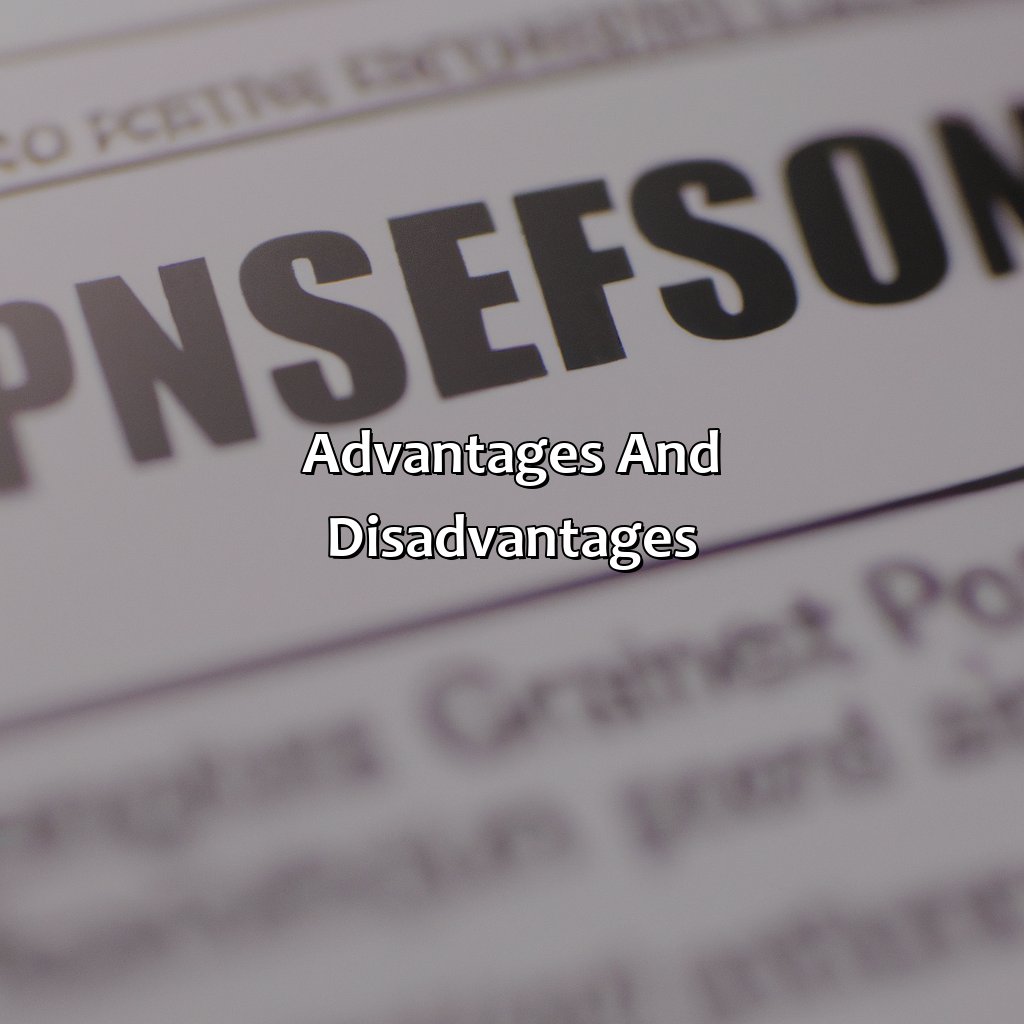
Image credits: retiregenz.com by Joel Jones
Pros of Pension Funds
Pension Funds Benefits
Funding retirement can be challenging, but with pension funds, you might have a more stable and secure future.
- Tax advantages – Pension funds offer tax benefits such as tax-free investment growth.
- Employer contributions – Employers may contribute to the pension fund on behalf of the employees.
- Regular income – The ultimate advantage of having a pension fund is a guaranteed regular income in retirement.
- Low fees – Pension funds tend to charge low fees compared to other investment options.
- Diversification – Pension funds diversify their investments, which reduces the risk element for investors.
- Long-term savings- Pension funds encourage long-term savings habits for retirement planning.
Moreover, through having a balanced portfolio, one can achieve financial goals while benefiting from investment gains.
Which of the following IRAs provides a pension for employees? Pro tip: Consider starting your pension plan at an early age to leverage compound interest effectively.
Unfortunately, the only guaranteed thing about a pension fund is that it guarantees you’ll have something to complain about when you retire.
Cons of Pension Funds
Pension funds may have certain drawbacks that need to be considered carefully. Here are some factors that may be of concern:
- Market risks: The value of investments may fluctuate with market movements, which can affect the overall performance of the fund.
- Fees and charges: Pension funds often come with management fees, which can eat into investment returns over time.
- Limited control: As an individual investor, you may not have complete control over where your money is invested or how it is managed.
- Tax implications: Withdrawals from pension funds are not tax-free, and there may also be tax implications to consider when making contributions or switching providers.
- Inflation risk: Pension payments can lose value due to inflation over time, decreasing purchasing power for retirees.
- Long-term commitments: Once you commit to a pension fund, it can be difficult or expensive to change providers or withdraw your savings early.
It’s important to understand these potential downsides before investing in a pension fund. However, it’s worth noting that these concerns don’t necessarily outweigh the potential benefits of having a steady source of retirement income.
When considering pension funds as an investment option, it’s important to conduct thorough research and seek professional financial advice tailored to your specific circumstances.
A colleague of mine invested in a pension fund early on in her career but didn’t do her due diligence beforehand. She discovered many years later that the fees were much higher than she anticipated, significantly reducing her ultimate payout. This serves as a reminder that careful consideration and knowledge about your investment portfolio is essential for long-term financial stability.
Trying to navigate pension fund regulations is like trying to untangle a ball of yarn that’s been tied by a cat with a vendetta against knitters.
Regulations
To comprehend the rules of pension funds, you must be aware of the legal structure and conformity needs. These subsections will aid you in getting a good grasp of the regulations and guidelines that control pension funds. This ensures they run within the limits of the law and satisfy compliance standards.

Image credits: retiregenz.com by James Arnold
Legal Framework
The statutory framework for pension funds is regulated by the government and overseen by regulatory bodies such as the Pensions Regulator in the UK. This framework sets out the rules and guidelines around how pension funds are managed, invested, and operated. The regulations also ensure that pension funds are protected and maintained for the benefit of their members.
The legal framework provides a comprehensive set of rules that govern the management and investment of pension funds. It establishes a requirement for trustees to manage the fund in line with specific objectives, including providing adequate benefits to members while managing costs effectively. Additionally, it outlines how assets can be invested, including limits on different types of investments.
If you are curious to learn more about pension funds, you can also read about what is the pension supplement and how it can benefit retirees.
It is essential to have a clear understanding of these rules and regulations when managing a pension fund. Trustees must comply with legal obligations to protect plan beneficiaries’ interests and minimize potential liabilities associated with pension investments. Achieving compliance requires putting robust governance structures in place that can manage risk effectively.
Trustees must ensure that they are acting in accordance with these regulations at all times, which involves ongoing monitoring, evaluation, and application of best practice. Regular reviews should assess compliance against current legislation and industry standards ensure trustees remain accountable to their members throughout their tenure.
Implementing sound governance practices not only helps trustees comply with regulatory requirements but also serves members’ best interests by ensuring that money is invested prudently and adequately safeguarded against risk exposure. As such, every trustee should have an informed view regarding this statutory framework governing pensions.
Compliance requirements may be tedious, but they’re a small price to pay for not getting fined and having to eat ramen noodles every day of your retirement.
Compliance Requirements
Meeting established legal and regulatory standards is essential for pension funds to operate lawfully. These requirements cover aspects such as investment activity, structure, governance, accounting, reporting and disclosure. Adhering to these regulations is necessary to ensure that pension funds can fulfill their fiduciary duty of providing retirement benefits to plan beneficiaries.
One important compliance requirement for pension funds is to have an investment policy statement (IPS), which sets the guidelines for investment decisions. Pension funds need to follow the IPS and update it regularly. Additionally, they must disclose all material facts about investments and transactions, making sure that all information presented to stakeholders is accurate and transparent. Learn more about who manages pension funds and their responsibilities.
It’s vital for pension fund trustees to oversee the fund’s management in compliance with applicable regulations thoroughly. To ensure such adherence and proper functioning of a pension fund – Asset managers should approach such designated tasks rigorously. It entails choosing a well-respected custodian or custodians’ holding the assets under strict controls while continually monitoring portfolio management activities.
Pro Tip: Staying up-to-date with ever-changing regulatory requirements can be challenging but worth investing time in ensuring optimal governance and risk mitigation strategies are adopted accordingly for any given year-end period.
Retire happy, or retire broke – the choice is yours, but a pension fund can certainly make it easier on the wallet.
Importance of Pension Funds
Understanding the importance of pension funds is key. Let’s focus on two aspects: social security and retirement planning. Both are great solutions to having a secure retirement.
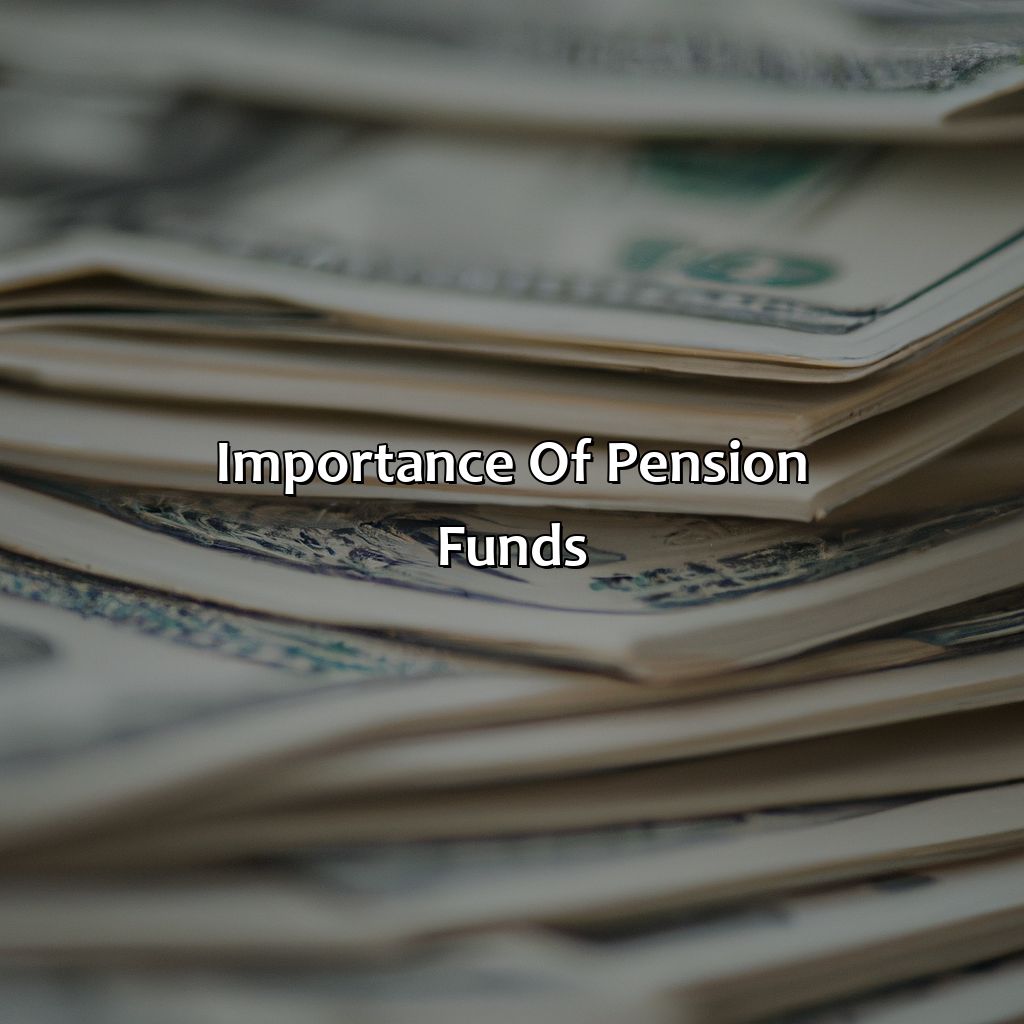
Image credits: retiregenz.com by James Woodhock
Social Security
Pension funds are a vital aspect of social welfare in various nations worldwide. They are investments made by governments, employers, and individuals to support citizens during retirement. Pension funds can provide important benefits, including financial stability in old age and adequate healthcare services. This makes them essential for people who wish to secure their future and live comfortably after their work lives are over.
Pension funds often have strict regulations as they manage people’s retirement savings. The investments made by pension funds are typically very diverse, covering various asset classes such as stocks, bonds, real estate, etc. They also offer additional benefits such as disability insurance or survivorship protection. This provides peace of mind to the participants while building a substantial amount of capital over time.
In countries with inadequate government-funded health care plans for retired citizens, pension funds provide the necessary support alongside healthcare benefits. By investing in these funds early on, individuals can mitigate financial instability later on in life.
Pro Tip – Start contributing to your pension fund as early as possible to benefit from the power of compounding returns over time.
Retirement Planning
Planning for a financially stable future after retirement is crucial. As we approach the end of our professional careers, it is essential to have a strategy in place that secures our financial well-being during those years ahead.
One way to achieve this goal is by investing in pension funds. These are investment vehicles set up by employers to help their employees save for retirement. Pension funds offer long-term investment plans that provide tax benefits and generate higher returns than savings accounts. If you’re wondering how to find your pension information, RetireGenZ has some useful tips to help you out.
Investing in a pension fund also ensures that you have a consistent income stream during retirement. By contributing to the fund throughout your career, you can build up a sizable nest egg that will afford you financial stability in later years. Find out how many pension plans are there in the US.
Moreover, many pension funds offer flexibility and control over how your money is invested. Pension funds may range from conservative investments like bonds and cash deposits or more aggressive ones like stocks or real estate holdings.
To maximize the benefits of these funds, it’s essential to make regular contributions and consider increasing your contribution rate when possible. The earlier you start investing in pension funds, the more significant the payoff will be down the line. Learn more about S pension and how it works.
Overall, planning for retirement should be taken seriously, and investing in pension funds is an excellent first step towards securing your financial future. With careful planning and consistent contributions, anyone can enjoy a comfortable retirement without any financial worries.
Five Facts About What Is Pension Funds:
- ✅ Pension funds are a type of investment vehicle used to save for retirement. (Source: Investopedia)
- ✅ Pension funds are typically set up by employers as part of employee benefits packages. (Source: The Balance)
- ✅ Pension funds are managed by professional fund managers who invest the assets in various financial instruments, such as stocks, bonds, and real estate. (Source: CNBC)
- ✅ Pension funds provide retirees with a steady stream of income in their retirement years. (Source: Forbes)
- ✅ The amount of retirement income provided by a pension fund is determined by factors such as the retiree’s age, years of service, and salary history. (Source: U.S. Department of Labor)
FAQs about What Is Pension Funds?
What is pension funds?
Pension funds are investment pools that are set up by organizations, unions, or governments to provide retirement benefits to their employees. These funds receive contributions from both the employee and employer, which are then invested in a diverse range of assets, including stocks, bonds, and real estate.
How do pension funds work?
Pension funds work by pooling money from many individuals and investing it in various assets to generate returns. These returns are then used to pay for retirement benefits for members of the fund. Typically, members of a pension fund contribute a percentage of their salary each month, which is matched by their employer.
What are the benefits of pension funds?
Pension funds provide retirement and long-term savings benefits to members, ensuring they have a steady source of income after leaving their jobs. They also diversified investments and provide access to professional investment management, which may be difficult for an individual investor.
Who manages pension funds?
Pension funds are managed by investment professionals, who are responsible for investing the contributions to generate returns for the benefit of fund members. These professionals are often employed by the organization or union that runs the pension fund.
What happens to pension funds if the company goes bankrupt?
If a company goes bankrupt, the employees’ pension fund is typically protected, and the assets are held separately from the company’s other assets. This ensures that the fund’s assets are available to pay out retirement benefits to members.
Are pension funds guaranteed by the government?
In most countries, pension funds are not guaranteed by the government. However, in some cases, the government may provide a safety net for pension funds that are in trouble. For example, in the United States, the Pension Benefit Guaranty Corporation (PBGC) provides some protection for pension funds that are unable to meet obligations to retirees.
